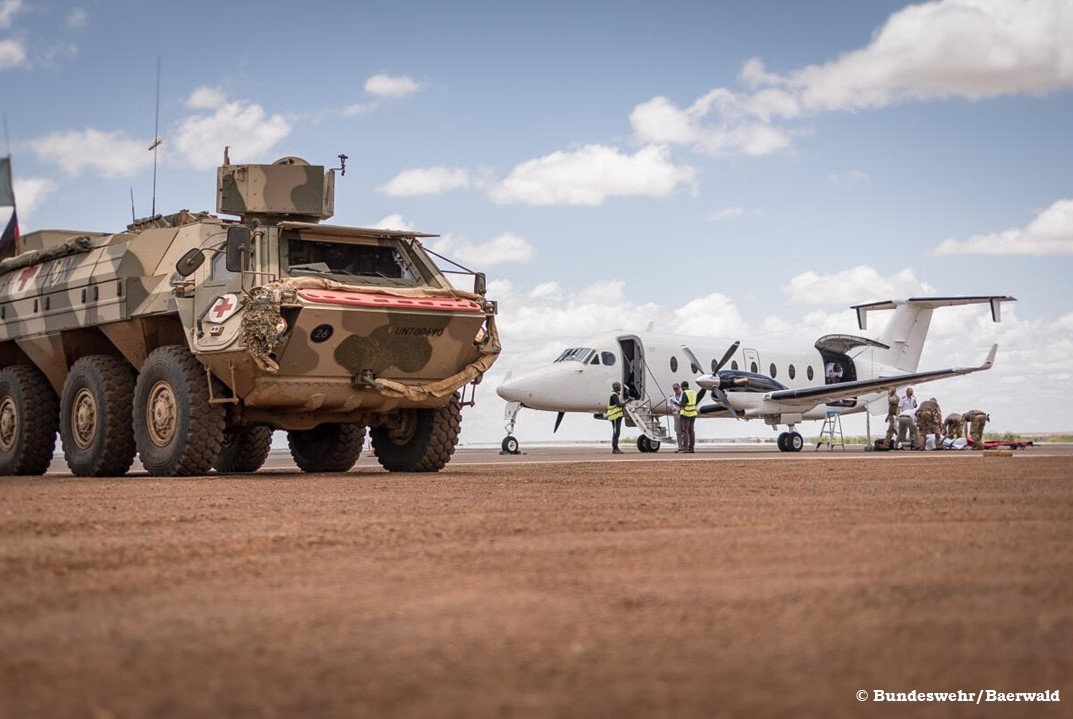What is the EDA’s role in AIRMEDEVAC and how does it contribute to EU defence?
When Belgian military personnel stationed in Niger fell ill during the COVID-19 pandemic, it was not the Belgian air force that evacuated them for medical attention, but a private German company, GHS. Ditto for Germany’s armed forces based in Mali and Niger, whose troops were aided by an Irish-based provider of air evacuation, Starlite.
Not all European air forces have extensive medical evacuation capabilities for all missions, and having a private airline constantly on call is not feasible either, especially when time is such a critical factor for the survival and recovery of injured service members. Experience shows that contracting on the spot is expensive. Field hospitals are unlikely to have the advanced medical facilities that are needed to handle severe injuries.
Enter the European Defence Agency (EDA), with its years of work in aeromedical evacuation, known as AIRMEDEVAC. EDA has played a behind-the-scenes role in giving EU armed forces access to air medical evacuation services, whether it be during national, or international missions and operations, when – and only when – they need it.
By agreeing so-called framework contracts ahead of time with providers – on behalf of parties including EU Member States, EU entities, the European Commission and EU military missions – EDA then sets the ground for specialists in military air medical evacuation to compete to offer the best and most cost-effective service.
With a ‘pay-per-use' set-up that does not impose any binding financial commitments beyond services requested, EDA also makes sure that each Member State receives the medical evacuation services it needs, depending on the mission, geography and risks. If requested, services can extend to cargo and passenger transportation.
“Air medical evacuation is a cornerstone of the support provided to the troops deployed on the ground, especially in remote areas such as Mali where you have limited local facilities,” said Daniel Krimphoff, the AIRMEDEVAC contract manager for Germany’s Ministry of Defence. “The contracting option for this kind of service was definitely the most suited for our operations. EDA availability and responsiveness ... has been of utmost importance,” he said.

Flight from a coup
Proof of EDA’s agility in anchoring air medical evacuation was on show in 2023, following a military coup in Niger in July 2023. Logistical challenges multiplied. EDA ensured the continuity of AIRMEDEVAC support by moving Starlite’s operational base from Niger to a neighbouring country. Medical personnel accompanied each mission, delivering care to patients in transit and respecting tight deadlines.
EDA's work with both Belgium and Germany allowed the completion of almost 100 air medical evacuation missions in Niger by GHS and Starlite, ensuring that many patients were safely evacuated between 2000 and 2023.
EDA’s military air medical evacuation work is an example of EU defence cooperation with EU Member States who benefit from EDA expertise and the advantages of bringing together Member States’ orders to entice the best services from competing providers.
Rescue me! Over 150 regions covered in new framework contract
EDA launched its latest framework contract last year to support EU Members States’ activities around the world. The framework contract gives access to specialised rotary and fixed-wing aircraft in Europe, Africa, and Asia, and allows armed forces to satisfy a wide range of aeromedical operational needs.
With a total budget of €140 million for the implementation period of up to four years, the contract allows for more scope than in 2019, as well as an increase in the area of operations, with over 150 regions covered around the world. During the implementation period, the selected framework contractors - FEROX, GHS, International SOS, and Starlite - are set to compete to offer their best services when needed.
EDA's framework contracts ensure that companies and aircraft are available to compete for a specific contract and that aircrafts are available.

Known as the ‘EDA AIRMEDEVAC Project Arrangement’, the work focuses on four areas:
- Efficient procurement
EDA is responsible for end-to-end contract management, from the translation of operational needs into technical specifications to follow-up activities on the ground. That allows end-users to save time and resources.
- Tailored services
Whether it’s evacuating wounded patients from remote areas of Africa, Europe, or Asia, any time of day or night, or setting up a long-term arrangement, EDA’s priority remains the same: delivering customised medical evacuation solutions to address unique requirements.
- Coordination
Although service providers are autonomous on the ground, EDA oversees the entire project implementation and is ready to act when necessary. This proactive approach optimizes the use of available assets, increases relations with the end user, and enhances the effectiveness of missions.
- Resilience
Through AIRMEDEVAC, EDA plays a role in strengthening EU armed forces. EDA helps Member States deepen defence cooperation. Lessons learned and expertise gained through AIRMEDEVAC operations contribute to innovating emergency medical services.